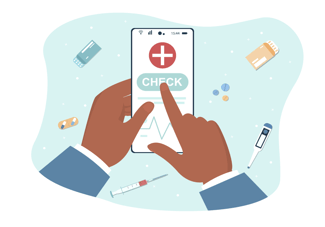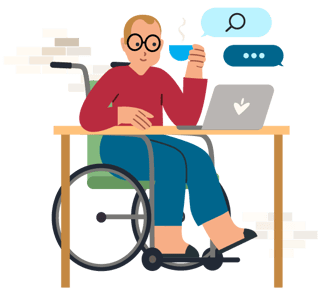
Leveraging Automated Patient Outreach to Address Social Determinants of Health
Several studies have estimated that medical care only accounts for about 10 percent of health outcomes. This is a surprising statistic considering that the U.S. national healthcare spending is upwards of 3.8 trillion dollars. These figures suggest that instead of paying for higher quality care, patients are paying for care inefficiencies.
 The U.S. model of healthcare is reactive and perpetuates the patient's mentality to use the system as such, I.e., once your symptoms develop, then you seek care. While a significant amount of money and energy is concentrated on treatment, therapies, and medical care, the other 90 percent of contributions to health outcomes are under targeted.
The U.S. model of healthcare is reactive and perpetuates the patient's mentality to use the system as such, I.e., once your symptoms develop, then you seek care. While a significant amount of money and energy is concentrated on treatment, therapies, and medical care, the other 90 percent of contributions to health outcomes are under targeted.
Social determinants of health (SDOH) are conditions in the places where people live, learn, work and play that affect a range of health and quality-of-life-risks and outcomes. According to the CDC, there are five categories of SDOH; healthcare access and quality, education access and quality, social and community context, economic stability, and neighborhood and built environments. These can significantly impact a patient's digital and financial literacy as well as their self-efficacy in their healthcare journey.
At Orbita, we often discuss 'meeting the patient where they are.' This phrase is ambiguous but broadly speaking means a shift to patient-centric care that identifies specific barriers and healthcare needs in a patient's journey and delivers the tools and support to them in an accessible way. The patient-centric model instinctively considers these social determinants of health when determining how to connect a particular patient with healthcare resources. 
These economic and social conditions can intersect at various points in the healthcare journey and can have a snowball effect. For example, the health poverty trap is a huge economic barrier to healthcare access (income is proven to be strongly associated with morbidity and mortality, and poor health contributes to reduced income, creating a negative feedback loop). There is also a significant correlation between education and healthcare access as well as specific communities' mistrust of medical systems.
Understanding the role of these social determinants of health and addressing them in the care journey proactively improves health outcomes and minimizes health disparities.
This is an enormous undertaking and does not have a one size fits all solution, but thankfully, technology has made strides in personalizing healthcare and connecting with patient populations in different ways to improve engagement. The digital front door is an integrated digital experience that educates and empowers patients on their healthcare journey. At Orbita, the digital front door solution consists of numerous conversational modules such as symptom checker and care recommendations, scheduling, FAQs, and call center escalation, to name a few. Access to these digital tools can support patients in a range of social and economic positions.
The key to opening this digital front door for patients afflicted by a variety of social determinants of health is in the outreach strategy. 
With a digital front door solution, healthcare organizations have the opportunity to efficiently reach consumers through automated outreach and engage patients to close care gaps around routine screenings, annual exams, vaccinations, and beyond. Orbita Outreach supports healthcare organizations in the identification of patient populations and then the creation of personalized, proactive campaigns around scheduling, appointment reminders, treatment follow-ups, education reinforcement, and more.
In the deployment of these campaigns, the omnichannel and multilingual capabilities of Orbita are what successfully engage patients and open their digital front door. Cascading this outreach from one channel to the next can optimize patient engagement and reduces technology barriers in the process.
 In the past year, we have witnessed these gaps in care deepen as the COVID-19 pandemic disproportionately affects low-income and minority populations with historically poorer quality and access to healthcare. These disparities continued into the vaccine rollout. Misinformation, mistrust, and difficulties finding and scheduling appointments left these vulnerable populations at a disadvantage in the digital race for vaccines. To combat this, one healthcare organization utilized Orbita Outreach to cascade communication to specific populations and offer personalized vaccine education and scheduling guidance.
In the past year, we have witnessed these gaps in care deepen as the COVID-19 pandemic disproportionately affects low-income and minority populations with historically poorer quality and access to healthcare. These disparities continued into the vaccine rollout. Misinformation, mistrust, and difficulties finding and scheduling appointments left these vulnerable populations at a disadvantage in the digital race for vaccines. To combat this, one healthcare organization utilized Orbita Outreach to cascade communication to specific populations and offer personalized vaccine education and scheduling guidance.
This strategy is successful at meeting patients where they are because it accounts for the various social and economic situations patients may be in and standardizes the quality of support for each patient.
